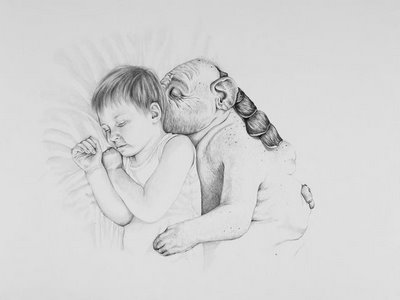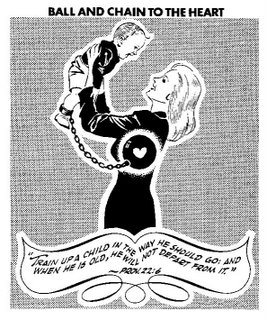mother-daughter relationship
The psychoanalytic development of women is influenced by complex mother-daughter relationships.
In fact, the failure of that psychoanalytic development and the difficult mother-daughter relationships may influenc/harm/destroy development of the daughter individual abilities to establish successful interpersonal relationships apart from their mothers.
ref: "the pianist","daughter of suicide", "grey gardens", "thirteen"
father-son relationship
It is characteristic the use of silence -and other non-verbal practices- to communicate feelings between fathers and sons that can be seen as rituals: football, card-games, wrestling, etc.
Fathers influence and/or reproduce of gender role stereotype.
ref:"broken flowers","garden state"
father-daughter relationship
Fathers have a considerable influence on their daughters' liveliness.
Most women have much closer relationships with their mothers than their fathers. Indeed, many fathers and daughters know very little about one another side from the somewhat predictable, stereotypic roles they play in the family.
The father-daughter relationship at adolescence is an outlier: It is distinguished from the other three parent-child dyads by its affective blandness and low level of interaction
ref:"on golden pond", "chinatown"
mother-son relationship
The emotional/physical absence of the husband usually structures these relationships.The point is that neglected or abandoned wives may unconsciously cast their sons as surrogate husbands, turning to them for support--if hopefully not for more.
ref:jesus and mother-mary, oedipus rex,"respiro", "sweet sixteen","psycho"
also
Investigation into parent-child relations of homosexual and heterosexual men and women is heavily documented in research literature, and a link between the absence of sufficient bonding with same-sex parent or role models and the development of adult male and female homosexuality has been proposed but not proved.
Saturday, September 30, 2006
Friday, September 29, 2006
Wednesday, September 20, 2006
the Bully and the Stutterer

Bully
A bully is an individual who torments others through verbal harassment, physical assault, or other ways.
Bullying is most often used to describe a form of harassment perpetrated by someone who is in some way more powerful, physically or socially.
There is direct bullying and indirect bullying, also known as social aggression:
Direct bullying is the form most common to male bullies.
Social aggression or indirect bullying is most common to female bullies and young children, and is characterized by forcing the victim into social isolation by:
-spreading gossip
-refusing to socialize with the victim
-bullying other people who wish to socialize with the victim
-criticizing the victim's manner of dress and other socially-significant markers like race, religion, disability, speech disorders

Speech Disorders
Speech disorders may be classified according to their causes or symptoms. The major causes are organic, imitative environmental, and psychogenic. Organic disorders may result from disease, impairment, or absence of the organs of speech. Imitative disorders occur when the child imitates defective speech. A speech disorder has a psychogenic origin when there is a psychological basis for its presence. A classification includes disorders of articulation, rhythm, voice, and symbolization.
Disorders of articulation may be so severe that the resultant speech is unintelligible. Specific sounds or groups of sounds may be omitted, added, substituted, or distorted.
The following are some examples of this type of disorder: Lalling, rhotacism, lambdacism,etc., involving misarticulated R, L, T, and D sounds, may be caused by poor control of the tongue tip. In lisping, misarticulated sibilant sounds, particularly S and Z, are often substituted by the 'TH' sound.
Delayed speech, involving the absence of many consonants and poor intelligibility, is often caused by slow physical or psychological maturation. Dysarthria, generalized sound substitutions and distortions, is caused by lesions in the peripheral or central nervous system.
Disorders of rhythm are characterized by disruptions of the normal rate of speech. Two common disorders of rhythm are stuttering or stammering and cluttering.
Subscribe to:
Posts (Atom)

